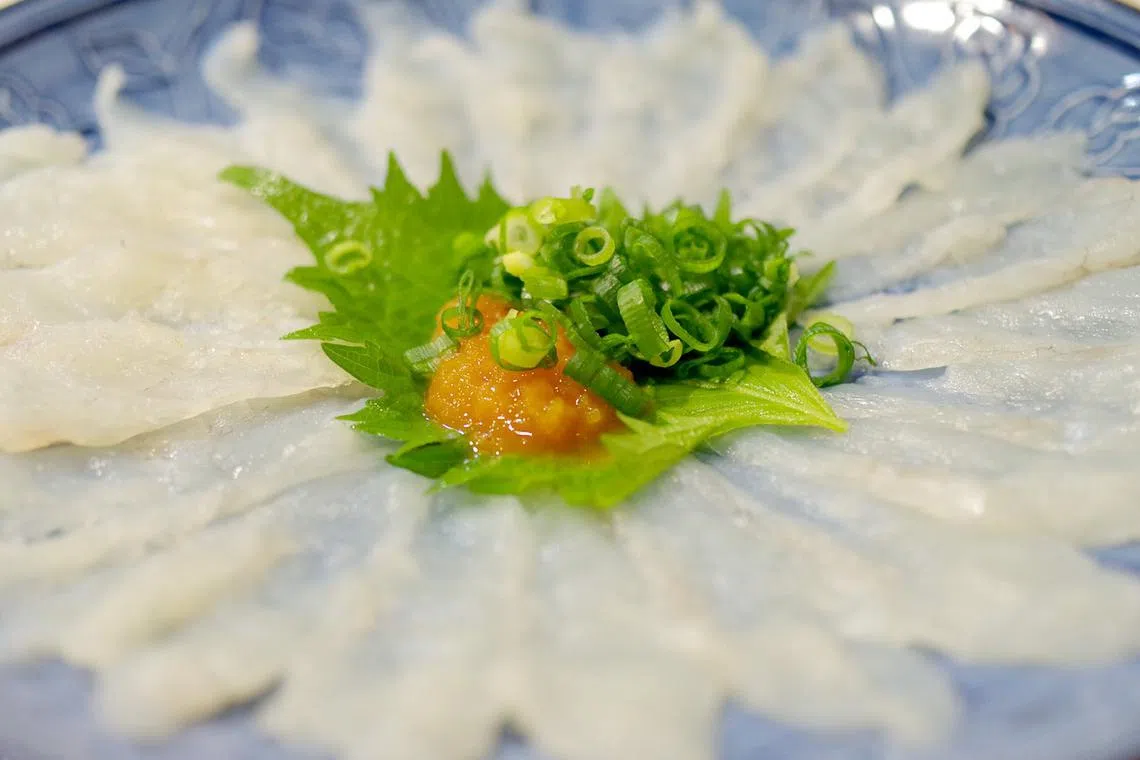Pufferfish imported from Japan safe to eat, says international fugu body
Sign up now: Get ST's newsletters delivered to your inbox

Only pufferfish that is processed according to stringent Japanese safety regulations can be distributed and exported.
PHOTO ILLUSTRATION: PIXABAY
Follow topic:
KUALA LUMPUR – Malaysians can rest assured when consuming pufferfish that is imported from Japan due to the extensive safety regulations that make it safe to eat, an official from Japan said on Sunday.
Countries where pufferfish from Japan is distributed include Malaysia as well as Singapore, the United States, Australia and Russia, Mr Yukihiro Furukawa, president of Japan’s International Fugu Association, told Bernama on Sunday.
His remarks came months after two people in Kluang, Johor, died after unknowingly eating the poisonous pufferfish
Mr Furukawa said those who enjoy the fish should know that in Japan, only pufferfish, or fugu as it is known in the country, that is processed according to stringent safety regulations can be distributed and exported.
There are reportedly about 440 species of pufferfish, but fish from the species commonly caught in the seas around Malaysia (Lagocephalus lunaris) is highly poisonous and hence inedible.
In Japan, thanks to highly scrutinised safety measures, locals safely enjoy about 10,000 tonnes of fugu every year.
Elaborating on Japan’s safety standards, Mr Furukawa said the government decides the fishing waters, types and parts of the fugu (meat, skin, testicles) that are fit for consumption, while local governments issue licences to chefs who are certified to handle the fish.
These chefs must obtain a pufferfish handling qualification, which recognises their ability to identify permissible species of fugu and tests their skill in removing toxic fugu parts in an exam.
Only special facilities with qualified personnel are allowed to process pufferfish, said Mr Furukawa.
By consuming only pufferfish products processed under the standards established by Japan’s Ministry of Health, Labour and Welfare, Malaysians should be able to enjoy the same delicious pufferfish dishes as they would in Japan, added the International Fugu Association president.
“Although we do not have the actual number of pufferfish exported from Japan into Malaysia, it is estimated to be about one tonne per year,” he said.
He also said that Malaysia’s ability to offer the traditional Japanese pufferfish delicacy will raise its popularity among tourists and food lovers, given its deep understanding of foreign food cultures and diversity.
Pufferfish is globally recognised as a luxury fish, so there will also be economic benefits for fine dining restaurants, he said.
Compared with other fish, pufferfish is abundant in amino acids and collagen, but low in fat, with a firm texture and a refreshing aftertaste even after it is fried in oil. These features make it an ideal ingredient in high-end Malay and Chinese dishes as well as Japanese dishes, said Mr Furukawa.
“Most of the cases of pufferfish food poisoning in Japan are caused by individuals cooking fugu caught by themselves, so the Japan national government and local governments have embarked on a campaign to raise awareness of prohibiting amateur cooking of pufferfish,” he said.
On March 25, Mr Ng Chuan Sing and his wife, Madam Lim Siew Guan, from Kluang bought pufferfish before cooking it for lunch, reported Malaysian daily The Star.
Madam Lim began experiencing breathing difficulties and shivers soon after her meal and the 83-year-old died later that evening.
Mr Ng, 84, developed similar symptoms and slipped into a coma. He died on April 8 after 10 days in the intensive care unit.
On July 2, their daughter, Ms Ng Ai Lee, urged the authorities to strengthen the relevant laws and enforcement to prevent similar tragedies.
The poisonous fish was still being sold in some local markets,

